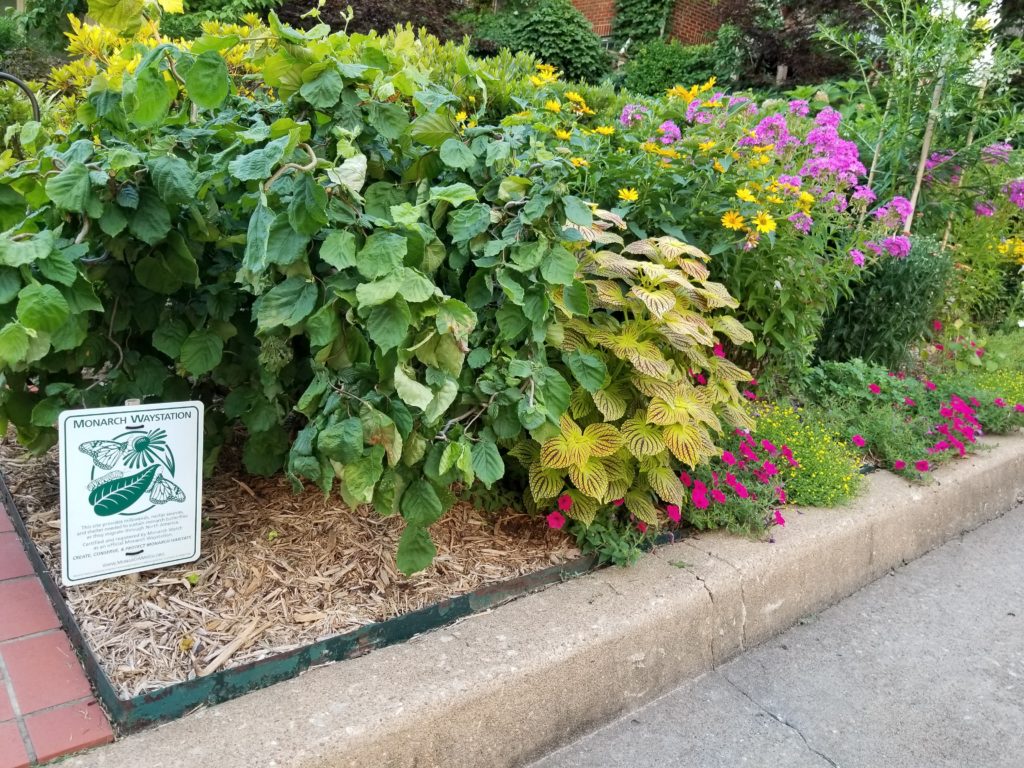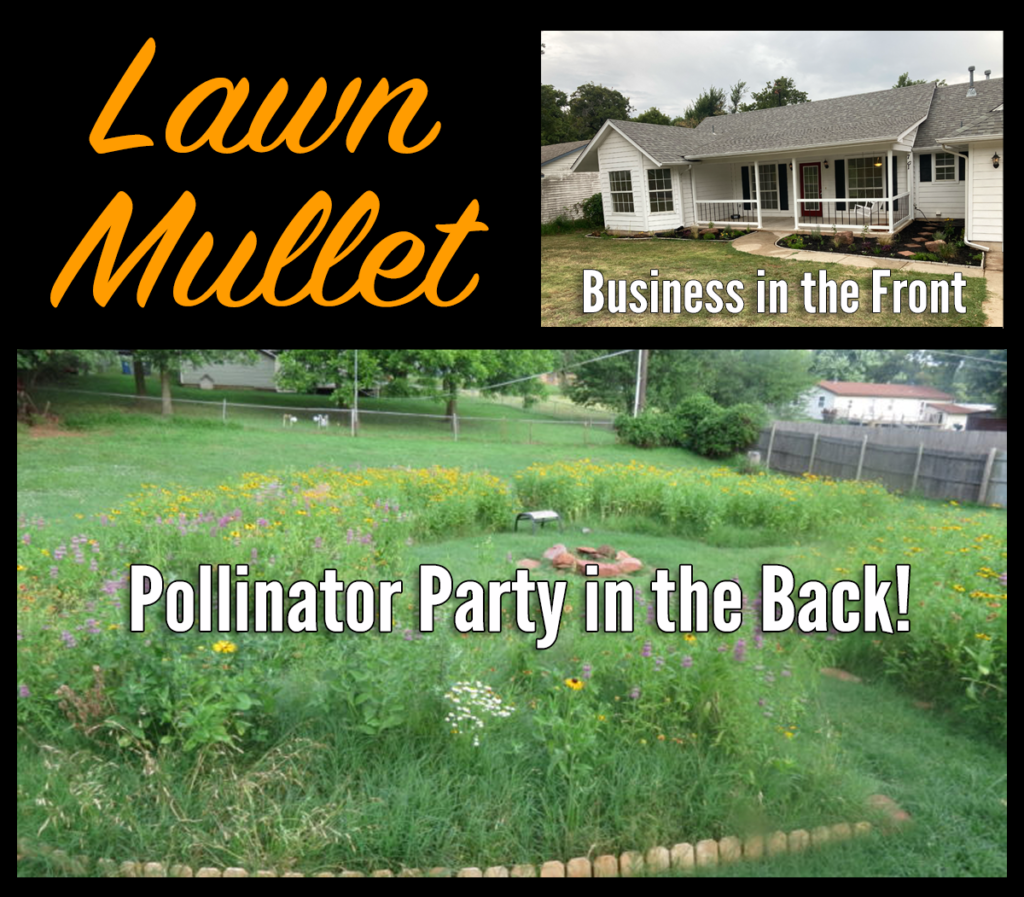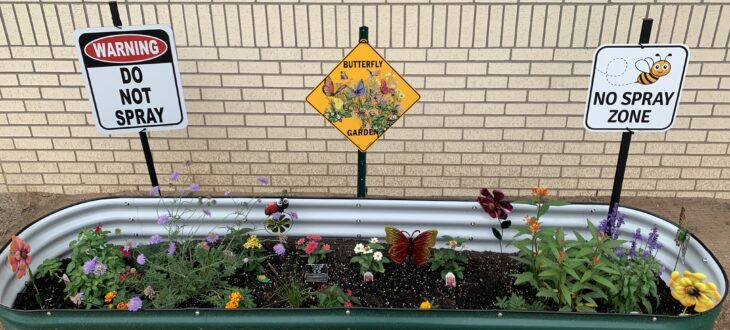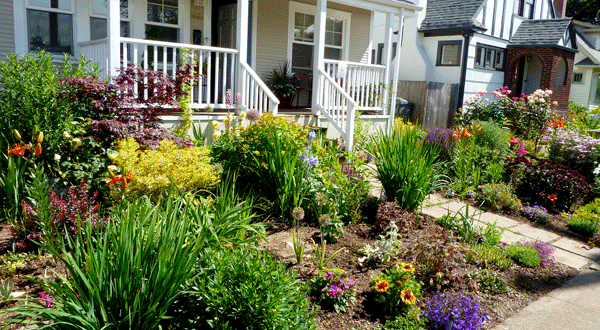 Richard A. Kotarsky, M.A.
Richard A. Kotarsky, M.A.
Curator of Conservation & Scientific Advancement at the Tulsa Zoo
What can you do to ensure success not only with your garden, but with your municipality and with your next door neighbors?
So you’ve heard about monarch butterflies and pollinators needing our help in Oklahoma and you’re wondering how can you get involved. You might be surprised to learn that planting a garden is the easy part and that getting everyone aware and understanding why you planted one can sometimes be a more difficult task.
Most people in general have heard of or know the basics about monarch butterflies and how they migrate and that they need milkweed to survive, but they may not realize how fragile the complexities are and the ecological balance of resources needed for this species to be successful year after year.
Believe it or not, your garden design and communication with your neighbors also needs an important balance in order to be most successful.
What Are the Rules?
When considering planting a pollinator garden at your home, church or school it is important to be aware of municipal ordinances and also homeowner associations rules and regulations. City governments are not typically concerned with the size or even what you plant, but more concerned with how it may impact the line of site for safety and encroachment onto sidewalks and streets.
- Every municipality is different when it comes to lawn maintenance and regulations, so contact your local city government to find out the details.
- Also, consider what type of rules there may be for yard maintenance and regulation with any homeowner association (HOA) within your neighborhood. Municipalities will always default to the HOA first when assessing a garden/yard and determining a compliance issue. If you follow the HOA rules (if there is one) and you’re in compliance with the municipality you live in, you should be fine.
Avoid Common Areas
In general, it is best practice to just avoid planting near sidewalks or driveways in order to maintain these municipal guidelines and to avoid creating any public safety issues with visual or physical barriers from plantings.
Clean Edges & Border
Make certain you maintain your garden to have clean edges and a border. The modern human eye is trained to think negative thoughts if it doesn't see clean lines. You can avoid majority of your complaints with just clean edges and a border.
GOOD EXAMPLE: Signage and clean edges

BAD EXAMPLE: Impedes sidewalk

Get Rid of Invasive Species
If your garden has invasive species such as Johnson grass, Ragweed, Canadian lettuce or Horsetail, you will need to dig or pull them out. Invasive species are an eye sore and will only attract negative attention to your hard work.
INVASIVE SPECIES EXAMPLES

Lawn Mullet
One way to avoid complaints is to host habitat in your backyard, also known as a "lawn mullet". This strategy involves keeping the front yard trimmed low, while hosting a pollinator garden and/or taller lawn in the back. Business in the front, pollinator party in the back.

Did you know that you can do a lot for pollinators by simply mowing less? All the while, saving money and time on gardening.
Studies have shown that if you mow every two or three weeks, your once barren yard can become a buffet for pollinators in just a few short weeks. You will see quick-blooming “weedy” flowers sprout up from the soil. Instead of treating weeds like unwanted invaders, to help save our native pollinators, treat them like welcomed guests! They’ll beautify your lawn for a few days at a time all throughout the growing season and they’ll do it for free. All it takes is giving them a bit more time between mowing to put up their flowers. - Atticus Murphy, Tufts Pollinator Institute
Give what you can. Customize your lawn mullet to your comfort level. Whether it's a small, medium or large portion of your yard, native pollinators will benefit.
What types of flowers will spontaneously grow in your lawn? It’s hard to say, and that’s part of the fun! In Oklahoma, you might expect to see pollinator-friendly flowers such as dandelions, clovers, henbit and other quick-blooming, low-growing species.
Many of these species may not be native, but they are nevertheless sources of nutrition for our native pollinators. So if you’re interested in helping pollinators but don’t want to make the leap into pollinator-friendly gardening just yet, welcoming some "weeds" into your life is a great first step towards making your property a refuge for native pollinators.
Crave some tidiness? Sculpt your backyard lawn habitat by mowing around the edges...add a border for a special touch.
Want to see more flowers? An easy way to add more color to your lawn mullet is to add native wildflower seeds in late fall. First, mow and weedeat your designated lawn area as short as possible...until you see dirt if possible. Then, sprinkle and stomp in a light mix of soil and native wildflower seeds. Lightly water the area. Come spring, you'll have beautiful native wildflower blooms to admire and the pollinators will love you for it!
Communication
Then, all that remains is for you to be communicative with your neighbors. This should be done even before you start planting in your yard.
- According to city officials I’ve spoken with, most cases of neighbors reporting unkempt yards is from neighbors not knowing what it is they are looking at or even that is has a purpose.
- Let them know ahead of time what you will be planting, explain to them why it’s important to plant a garden for monarchs and pollinators and then take the time to explain or even show your neighbors pictures of the different phases of a garden throughout the year.
- Invite them to help plant your garden or offer to help plant one in their yard. Doing this can drastically help with your garden being the most successful and you’ll be pleasantly surprised in their interest, especially when they begin to witness all the beautiful plants and activity with the “King” of butterflies in your garden and with many other species of butterflies, hummingbirds and frequent visitation from other native pollinators.
Signage
Posting a sign in your garden is a very useful way to start conversations with your neighbors. Additionally, it shows you are doing the garden with intent... that you have a purpose. Often when neighbors see your sign, they will ask you questions about what it means. This is the perfect way to begin to encourage them to make more positive choices, too. You can begin to teach all of your neighbors about the joys of sharing your space with birds, butterflies, pollinators amphibians, and other critters.
- Make your own sign - this is a fun activity with the kids.
- Certify your garden to receive a sign. Here's several certification programs available.
- Make certain your sign is visible to the public and that your wildflowers are not hiding it.
SIGNAGE EXAMPLE

RICHARD KOTARSKY is the Curator of Conservation and Scientific Advancement at the Tulsa Zoo. An ambassador for many of the City of Tulsa’s stewardship and conservation initiatives, he played a major role in helping the Tulsa Mayor’s office sign the National Wildlife Federation Mayors Monarch Pledge. He is active in Monarch Initiative Tulsa and shares his knowledge and passion at community education events. Ric also plays an active role with the Oklahoma Monarch and Pollinator Collaborative steering committee and outreach work group.

